
Where We Be
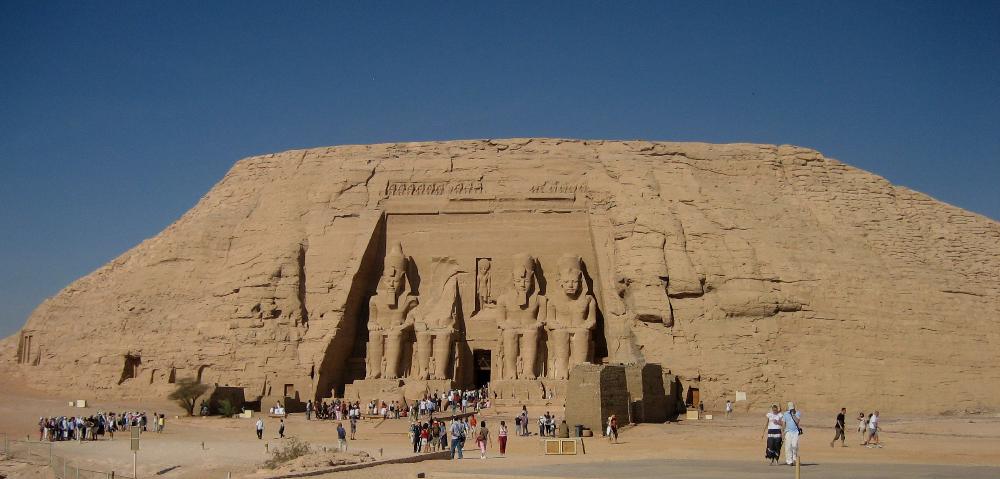
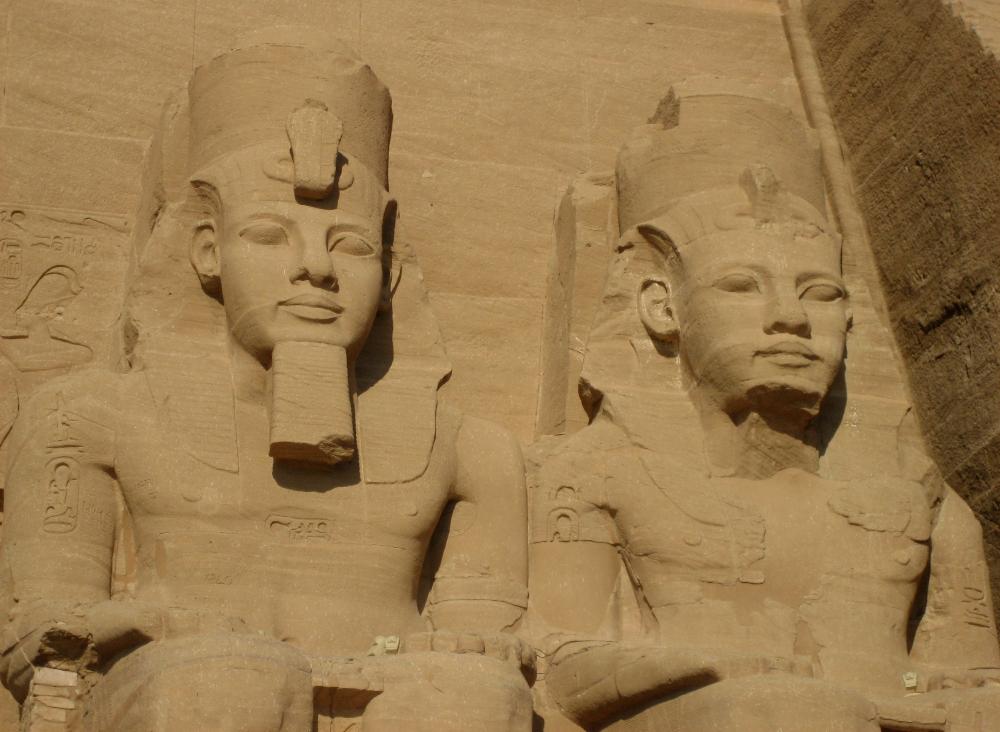
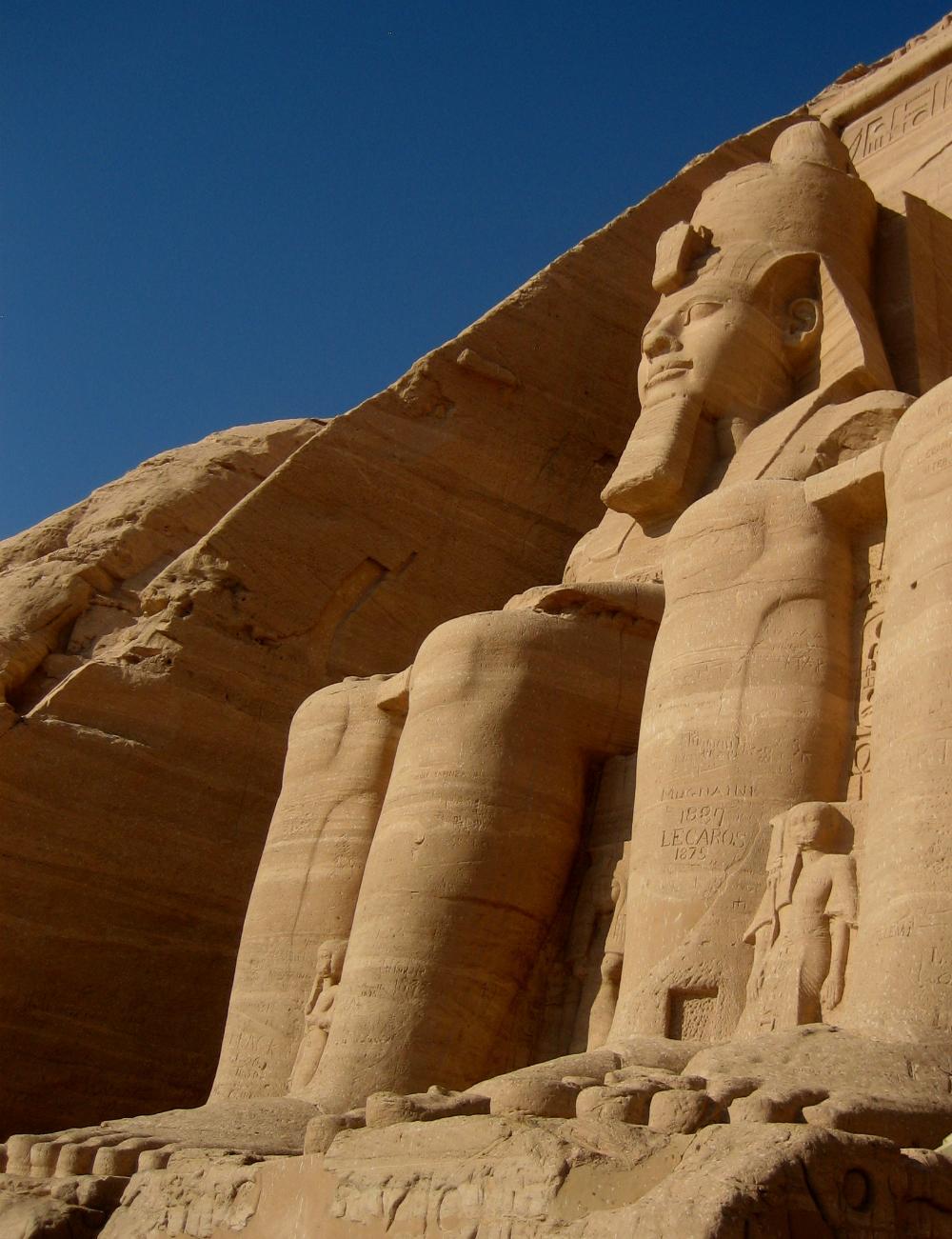
| The first glimpse is in some ways the most amazing |
| The tourists in the foreground serve a purpose -- they give perspective on just how big the statues are |
| Abu Simbel, Egypt |
| Some believe the statues were meant to overawe potential invaders from even thinking about entering Egypt |
| We were certainly overawed |
| Ramses II knew how to build big |
| The second glimpse isn't half-bad either! |
| Even Nefertari's temple has statues of Ramses II |
| Nefertari, beloved wife of Ramses II, has her own temple here |
| Mine, too! |
| Another dream realized -- this was definitely on Robin's must-do list |
| It's good to be king |
It may feel like you've gone to a lot of trouble
for just an hour's worth of sightseeing at Abu
Simbel, but once you catch your first glimpse of
the immense statues of Ramses II, suddenly it
all seems worth it. First you see two enormous
heads staring out to the Nile from the cliff face,
then, after a few more steps, you get a full-on
view of the four seated Ramses statues. Wow!
They are truly colossal and marvelous.
One statue was heavily damaged in an ancient
earthquake, but the other three are in remark-
ably good condition, especially when you
consider they were moved from their original
location during construction of the Aswan Dam.
The entire temple complex -- including the
mountain from which they were carved -- was
cut into enormous blocks and relocated by
crane to its current location above Lake
Nasser! This feat of modern engineering is
almost as impressive as the ancient feat of
carving the statues in the first place.
Inside the temple we transition from bright
desert to cool, dark interior. Eight more statues
of everyone’s favorite egotist, Ramses II, serve
as pillars here. Deeply etched carvings on the
walls show Ramses II conquering the Hittites,
being pulled in his chariot by a noble steed,
and standing on the head of a defeated enemy.
The colors are intact and quite brilliant. Small
rooms branch off from the main one, covered
with scenes of conquest and hieroglyphics.
At the back of the main temple are four seated
figures: Ramses in the middle, of course, next
to Amun-Ra, the sun god, and to the far right
the god of light and the far left the god of night.
Twice a year at the solstices, the sun shines
straight into the temple, highlighting the two
central figures and the figure to the right -- but
the god of night remains forever in darkness.
We also visit the adjacent temple of Nefertari,
beloved wife of Ramses II. It's smaller but still
impressive, especially when you consider it
was built for a woman in a time when temples
weren't built for women. There are only two in
all of Egypt -- this one and the one for Queen
Hatshepsut, which she built for herself. Even at
Nefertari's temple there are four statues of
Ramses to just two of Nefertari, but unusually
enough, the statues are all of the same height,
indicative of the esteem in which she was held.
Inside are images of Isis, Hathor, and scenes of
celebration and feasting, making it less warlike
than Ramses' temple.
for just an hour's worth of sightseeing at Abu
Simbel, but once you catch your first glimpse of
the immense statues of Ramses II, suddenly it
all seems worth it. First you see two enormous
heads staring out to the Nile from the cliff face,
then, after a few more steps, you get a full-on
view of the four seated Ramses statues. Wow!
They are truly colossal and marvelous.
One statue was heavily damaged in an ancient
earthquake, but the other three are in remark-
ably good condition, especially when you
consider they were moved from their original
location during construction of the Aswan Dam.
The entire temple complex -- including the
mountain from which they were carved -- was
cut into enormous blocks and relocated by
crane to its current location above Lake
Nasser! This feat of modern engineering is
almost as impressive as the ancient feat of
carving the statues in the first place.
Inside the temple we transition from bright
desert to cool, dark interior. Eight more statues
of everyone’s favorite egotist, Ramses II, serve
as pillars here. Deeply etched carvings on the
walls show Ramses II conquering the Hittites,
being pulled in his chariot by a noble steed,
and standing on the head of a defeated enemy.
The colors are intact and quite brilliant. Small
rooms branch off from the main one, covered
with scenes of conquest and hieroglyphics.
At the back of the main temple are four seated
figures: Ramses in the middle, of course, next
to Amun-Ra, the sun god, and to the far right
the god of light and the far left the god of night.
Twice a year at the solstices, the sun shines
straight into the temple, highlighting the two
central figures and the figure to the right -- but
the god of night remains forever in darkness.
We also visit the adjacent temple of Nefertari,
beloved wife of Ramses II. It's smaller but still
impressive, especially when you consider it
was built for a woman in a time when temples
weren't built for women. There are only two in
all of Egypt -- this one and the one for Queen
Hatshepsut, which she built for herself. Even at
Nefertari's temple there are four statues of
Ramses to just two of Nefertari, but unusually
enough, the statues are all of the same height,
indicative of the esteem in which she was held.
Inside are images of Isis, Hathor, and scenes of
celebration and feasting, making it less warlike
than Ramses' temple.
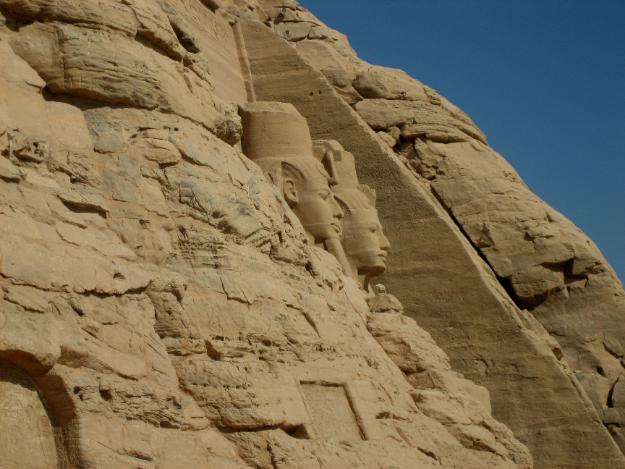
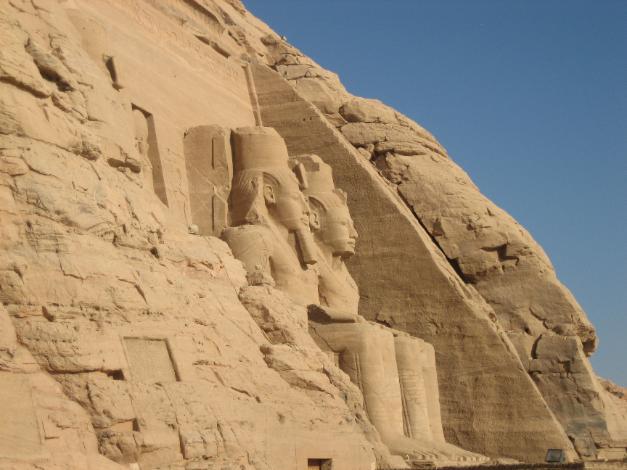
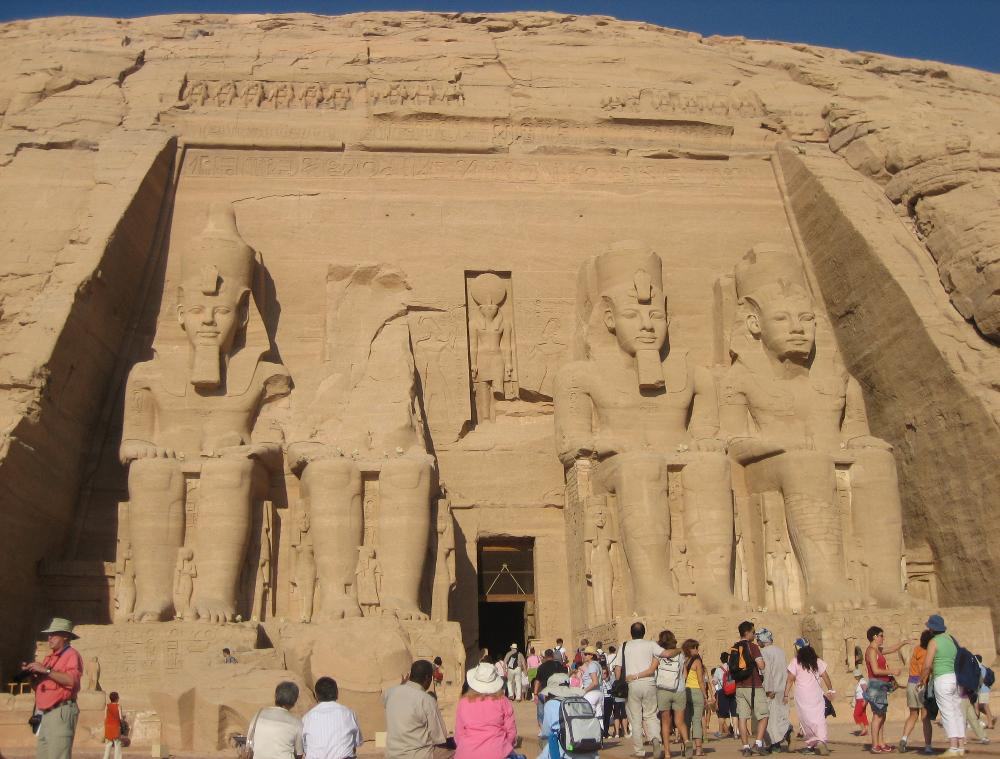
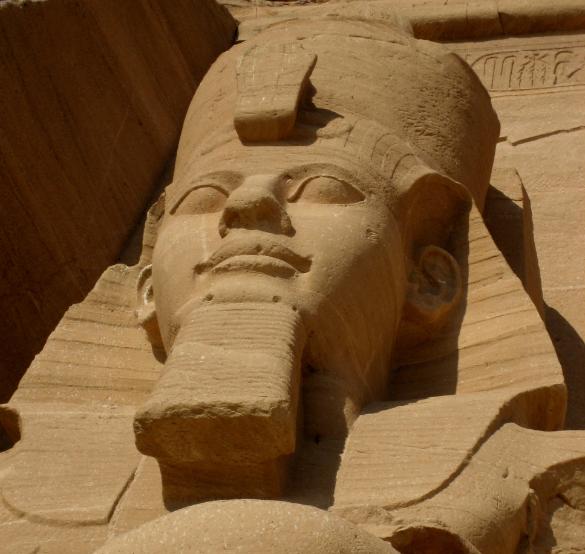
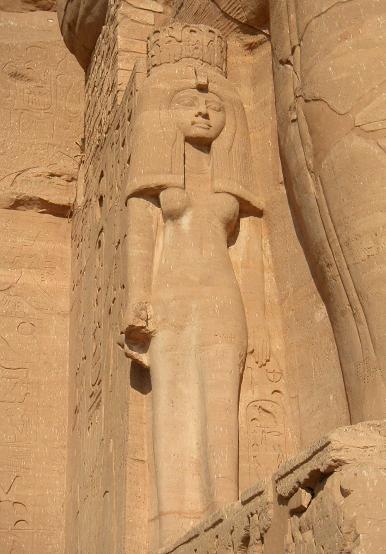
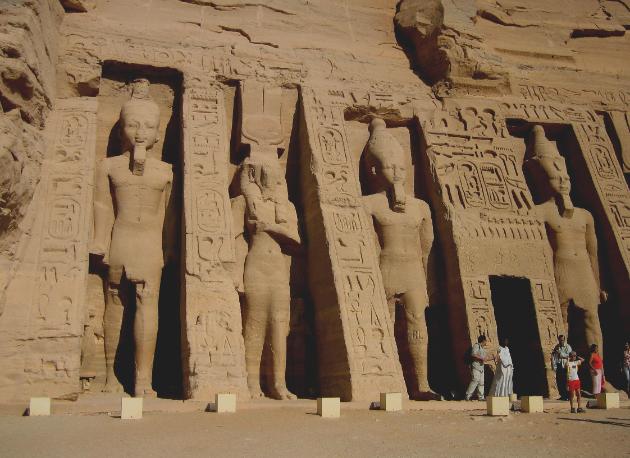
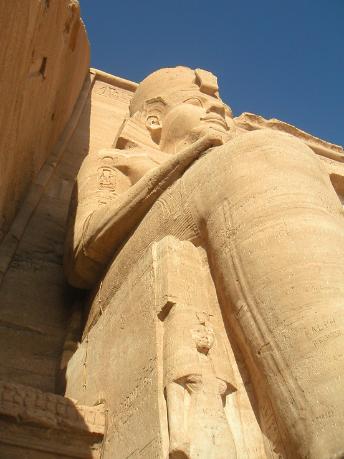
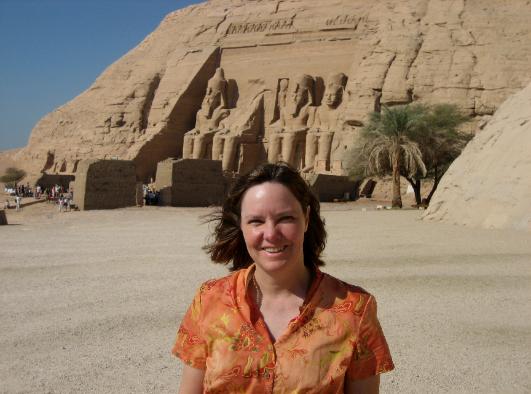
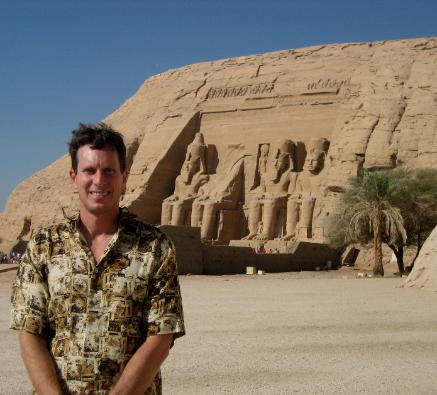
| One final look from a distant viewing platform at the edge of Lake Nasser |